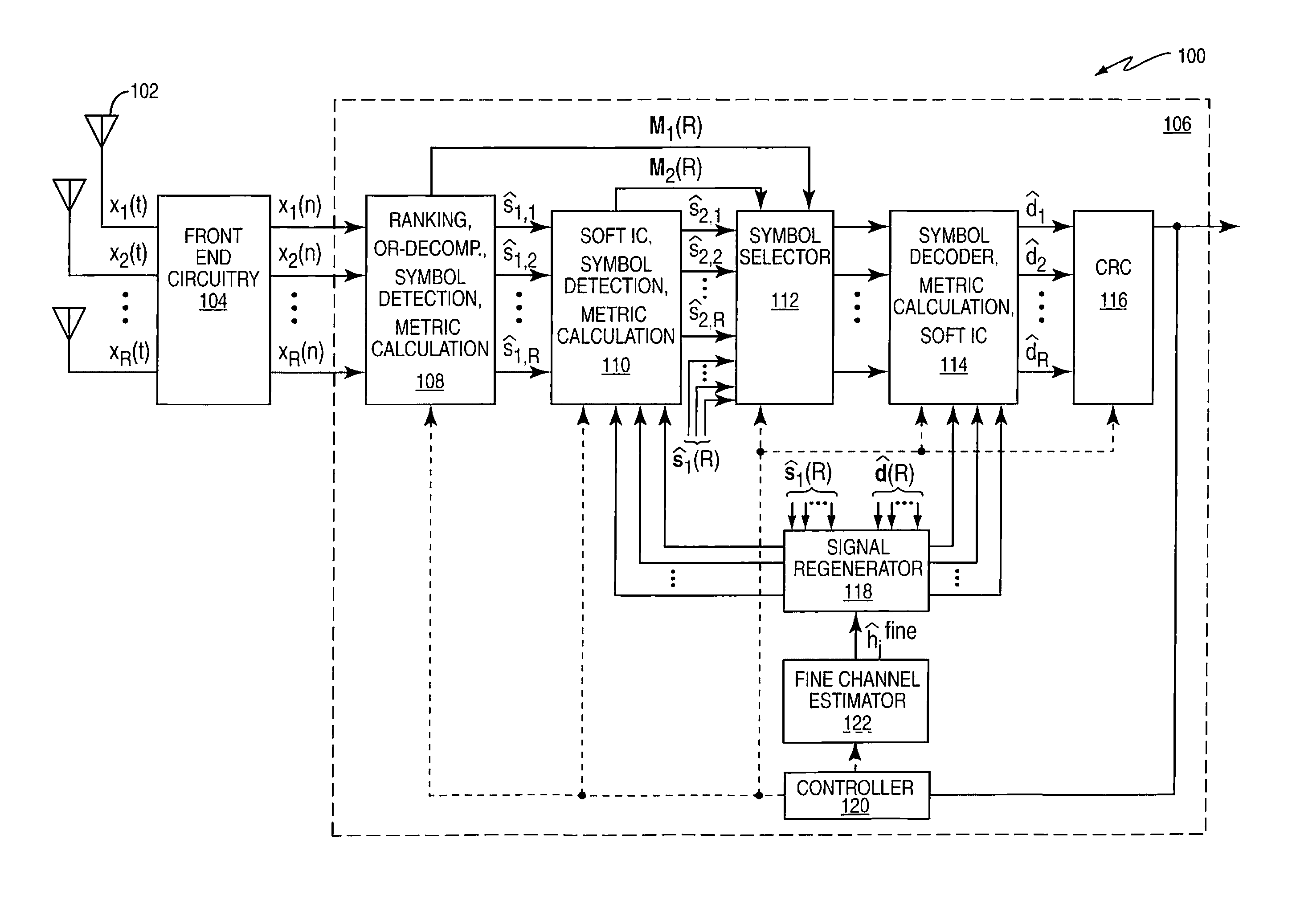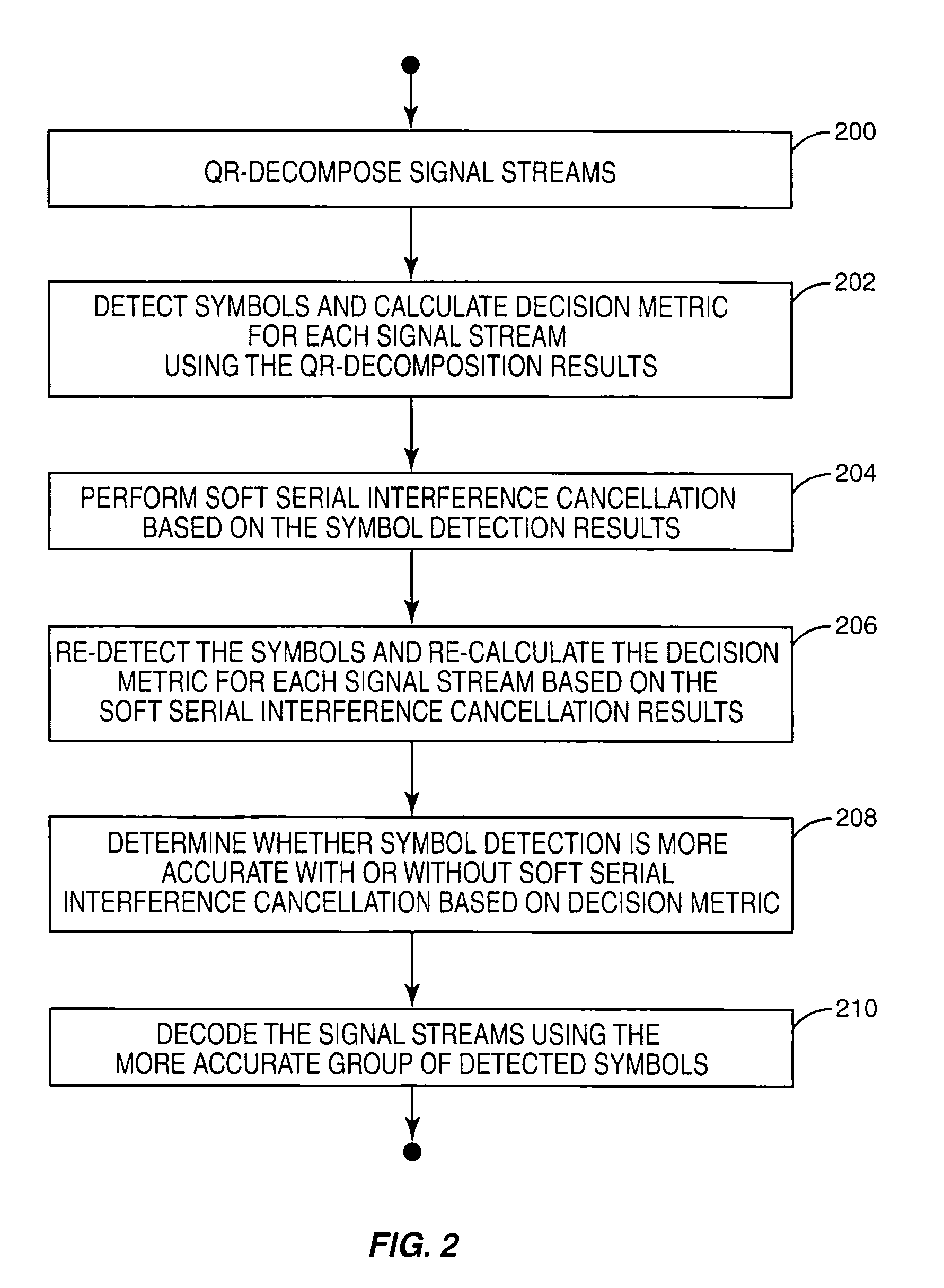Multi-Antenna Receiver Interference Cancellation Method and Apparatus
- Summary
- Abstract
- Description
- Claims
- Application Information
AI Technical Summary
Benefits of technology
Problems solved by technology
Method used
Image
Examples
Embodiment Construction
[0018]FIG. 1 illustrates an embodiment of a receiver 100 having R antennas 102 for receiving a signal transmitted over different signal propagation paths. The signals as a function of time (t) x1(t), x2(t), . . . , xR(t) received at the different antennas 102 each have contributions from different ones of the transmit antennas (not shown). The received signals are filtered, down-converted and digitized by front end circuitry 104 to form corresponding baseband signal streams as a function of symbol index (n) x1(n), x2(n), . . . , xR(n). The composite baseband signal vector x=[x1(n), x2(n), . . . xR(n)]T is processed by a baseband processor 106 included in the receiver 100 to decode the transmitted signal.
[0019]In one embodiment, the baseband processor 106 detects symbols for each signal stream before and after performing interference cancellation on the composite baseband signal. A decision metric is also calculated for each signal stream before and after interference cancellation. T...
PUM
 Login to View More
Login to View More Abstract
Description
Claims
Application Information
 Login to View More
Login to View More - R&D
- Intellectual Property
- Life Sciences
- Materials
- Tech Scout
- Unparalleled Data Quality
- Higher Quality Content
- 60% Fewer Hallucinations
Browse by: Latest US Patents, China's latest patents, Technical Efficacy Thesaurus, Application Domain, Technology Topic, Popular Technical Reports.
© 2025 PatSnap. All rights reserved.Legal|Privacy policy|Modern Slavery Act Transparency Statement|Sitemap|About US| Contact US: help@patsnap.com



